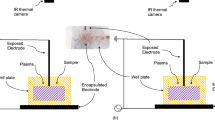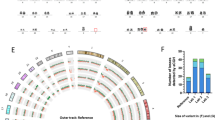Abstract
We have previously reported that AD5-10, a novel agonistic monoclonal antibody against DR5, possessed a strong cytotoxic activity in various tumor cells, via induction of caspase-dependent and -independent signaling pathways. The present study further demonstrates that reactive oxygen species (ROS) were generated in abundance in Jurkat leukemia cells upon AD5-10 stimulation and that ROS accumulation subsequently evoked sustained activation of c-Jun N-terminal kinase (JNK), loss of mitochondrial membrane potential, and release of endonuclease G (Endo G) from mitochondria into the cytosol. The reducing agent, N-acetylcysteine (NAC), effectively inhibited the sustained activation of JNK, release of Endo G, and cell death in Jurkat cells treated by AD5–10. Moreover, a dominant-negative form of JNK (but not of p38) enhanced NF-κB activation, suppressed caspase-8 recruitment in death-inducing signaling complexes (DISCs), and reduced adverse effects on mitochondria, thereby inhibiting AD5-10-induced cell death in Jurkat leukemia cells. These data provide novel information on the DR5-mediated cell death-signaling pathway and may shed new light on effective strategies for leukemia and solid tumor therapies.
Similar content being viewed by others
Log in or create a free account to read this content
Gain free access to this article, as well as selected content from this journal and more on nature.com
or
Abbreviations
- TRAIL:
-
(tumor necrosis factor-related apoptosis-inducing ligand)
- PCD:
-
(programmed cell death)
- DD:
-
(death domain)
- TNF:
-
(tumor necrosis factor)
- FasL:
-
(Fas ligand)
- TRAIL-R:
-
(TRAIL receptor)
- DR:
-
(death receptor)
- DcR:
-
(decoy receptor)
- FADD:
-
(Fas-associated death domain protein)
- JNK:
-
(c-Jun N-terminal kinase)
- RIP:
-
(receptor-interacting protein)
- PARP:
-
(poly (ADP-ribose) polymerase)
- AIF:
-
(apoptosis-inducing factor)
- Endo G:
-
(endonuclease G)
- PBS:
-
(phosphate buffered saline)
- FCS:
-
(fetal calf serum)
- MEFs:
-
(murine embryonic fibroblasts)
- ROS:
-
(reactive oxygen species)
- NAC:
-
(N-acetylcysteine)
- GSH:
-
(glutathione)
- NAO:
-
(nonyl-acridine Orange)
References
Ashkenazi A . Targeting death and decoy receptors of the tumour-necrosis factor superfamily. Nat Rev Cancer 2002; 2:420–430.
Guo Y, Chen C, Zheng Y, et al. A novel anti-human DR5 monoclonal antibody with tumoricidal activity induces caspase-dependent and caspase-independent cell death. J Biol Chem 2005; 280:41940–41952.
Schulze-Osthoff K, Ferrari D, Los M, Wesselborg S, Peter ME . Apoptosis signaling by death receptors. Eur J Biochem 1998; 254:439–459.
Bodmer JL, Holler N, Reynard S, et al. TRAIL receptor-2 signals apoptosis through FADD and caspase-8. Nat Cell Biol 2000; 2:241–243.
Wang WH, Gregori G, Hullinger RL, Andrisani OM . Sustained activation of p38 mitogen-activated protein kinase and c-Jun N-terminal kinase pathways by hepatitis B virus X protein mediates apoptosis via induction of Fas/FasL and tumor necrosis factor (TNF) receptor 1/TNFα expression. Mol cell Biol 2004; 24:10352–10365.
Nakshatri H, Rice SE, Bhat-Nakshatri P . Antitumor agent parthenolide reverses resistance of breast cancer cells to tumor necrosis factor-related apoptosis-inducing ligand through sustained activation of c-Jun N-terminal kinase. Oncogene 2004; 23:7330–7344.
Eliopoulos AG, Gallagher NJ, Blake SM, Dawson CW, Young LS . Activation of the p38 mitogen-activated protein kinase pathway by Epstein-Barr virus-encoded latent membrane protein 1 coregulates interleukin-6 and interleukin-8 production. J Biol Chem 1999; 274:16085–16096.
Zhang Y, Chen F . Reactive oxygen species (ROS), troublemakers between nuclear factor-kappaB (NF-kappaB) and c-Jun NH2 terminal kinase (JNK). Cancer Res 2004; 64:1902–1905.
Kamata H, Honda S, Maeda S, Chang L, Hirata H, Karin M . Reactive oxygen species promote TNFalpha-induced death and sustained JNK activation by inhibiting MAP kinase phosphatases. Cell 2005; 120:649–661.
Sakon S, Xue X, Takekawa M, et al. NF-kappaB inhibits TNF-induced accumulation of ROS that mediate prolonged MAPK activation and necrotic cell death. EMBO J 2003; 22:3898–3909.
Deng Y, Ren X, Yang L, Lin Y, Wu X . A JNK-dependent pathway is required for TNFalpha-induced apoptosis. Cell 2003; 115:61–70.
Wang L, Azad N, Kongkaneramit L, et al. The Fas death signaling pathway connecting reactive oxygen species generation and FLICE inhibitory protein down-regulation. J Immunol 2008; 180:3072–3080.
Patel NS, Chatterjee PK, Di Paola R, et al. Endogenous interleukin-6 enhances the renal injury, dysfunction and inflammation caused by ischemia/reperfusion. J Pharmacol Exp Ther 2005; 312:1170–1178.
Ventura JJ, Cogswell P, Flavell RA, Baldwin AS Jr, Davis RJ . JNK potentiates TNF-stimulated necrosis by increasing the production of cytotoxic reactive oxygen species. Gene Dev 2004; 18:2905–2915.
Shiraishi T, Yoshida T, Nakata S, et al. Tunicamycin enhances tumor necrosis factor-related apoptosis-inducing ligand-induced apoptosis in human prostate cancer cells. Cancer Res 2005; 65:6364–6370.
Ohtsuka T, Zhou T . Bisindolylmaleimide VIII enhances DR5 mediated apoptosis through the MKK4/JNK/p38 kinase and the mitochondrial pathways. J Biol Chem 2002; 277:29294–29303.
Holler N, Zaru R, Micheau O, et al. Fas triggers an alternative, caspase-8 independent cell death pathway using the kinase RIP as effector molecule. Nat Immunol 2000; 1:489–495.
Kim EH, Yoon M, Kim SU, Kwon TK, Sohn S, Choi KS . Arsenic trioxide sensitizes human glioma cells, but not normal astrocytes, to TRAIL-induced apoptosis via CCAAT/enhancer-binding protein homologous protein-dependent DR5 up-regulation. Cancer Res 2008; 68:266–275.
Efferth T, Giaisi M, Merling A, Krammer PH, Li-Weber M . Artesunate induces ROS-mediated apoptosis in doxorubicin-resistant T leukemia cells. PLoS One 2007; 2: e693. DOI: 10.1371/journal.pone.0000693
Shankar S, Ganapathy S, Srivastava RK . Sulforaphane enhances the therapeutic potential of TRAIL in prostate cancer orthotopic model through regulation of apoptosis, metastasis, and angiogenesis. Clin Cancer Res 2008; 14:6855–6866.
Kim S, Lee TJ, Leem J, Choi KS, Park JW, Kwon TK . Sanguinarine-induced apoptosis: generation of ROS, down-regulation of Bcl-2, c-FLIP, and synergy with TRAIL. J Cell Biochem 2008; 104:895–907.
Yi J, Yang J, He R, et al. Emodin enhances arsenic trioxide-induced apoptosis via generation of reactive oxygen species and inhibition of survival signaling. Cancer Res 2004; 64:108–116.
Herrera B, Alvarez AM, Sánchez A, et al. Reactive oxygen species (ROS) mediates the mitochondrial-dependent apoptosis induced by transforming growth factor (beta) in fetal hepatocytes. FASEB J 2001; 15:741–751.
Gelinas C, White E . BH3-only proteins in control: specificity regulates MCL-1 and BAK-mediated apoptosis. Genes Dev 2005; 19:1263–1268.
Das S, Khan N, Mukherjee S, et al. Redox regulation of resveratrol-mediated switching of death signal into survival signal. Free Radic Biol Med 2008; 44:82–90.
Atlante A, Calissano P, Bobba A, Azzariti A, Marra E, Passarella S . Cytochrome c is released from mitochondria in a reactive oxygen species (ROS)-dependent fashion and can operate as a ROS scavenger and as a respiratorysubstrate incerebellar neurons undergoing excitotoxic death. J Biol Chem 2000; 275:37159–37166.
Park MT, Kim MJ, Kang YH, et al. Phytosphingosine in combination with ionizing radiation enhances apoptotic cell death in radiation-resistant cancer cells through ROS-dependent and -independent AIF release. Blood 2005; 105:1724–1733.
Hamada M, Sumi T, Iwai S, Nakazawa M, Yura Y . Induction of endonuclease G-mediated apopotosis in human oral squamous cell carcinoma cells by protein kinase C inhibitor safingo. Apoptosis 2006; 11:47–56.
Varfolomeev E, Maecker H, Sharp D, et al. Molecular determinants of kinase pathway activation by Apo2 ligand/tumor necrosis factor-related apoptosis-inducing ligand. J Biol Chem 2005; 280:40599–40608.
Nakano H, Nakajima A, Sakon-Komazawa S, Piao JH, Xue X, Okumura K . Reactive oxygen species mediate crosstalk between NF-kappaB and JNK. Cell Death Differ 2006; 13:730–737.
Ichikawa K, Liu W, Zhao L, et al. Tumoricidal activity of a novel anti-human DR5 monoclonal antibody without hepatocyte cytotoxicity. Nat Med 2001; 7:954–960.
Park KJ, Lee SH, Kim TI, et al. A human scFv antibody against TRAIL receptor 2 induces autophagic cell death in both TRAIL-sensitive and TRAIL-resistant cancer cells. Cancer Res 2007; 67:7327–7334.
Ueda S, Masutani H, Nakamura H, Tanaka T, Ueno M, Yodoi J . Redox control of cell death. Antioxid Redox Sign 2002; 4:405–414.
Hancock JT, Desikan R, Neill SJ . Does the redox status of cytochrome c act as a fail-safe mechanism in the regulation of programmed cell death? Free Radic Biol Med 2001; 31:697–703.
Hildeman DA, Mitchell T, Kappler J, Marrack P . T cell apoptosis and reactive oxygen species. J Clin Invest 2003; 111:575–581.
Wicovsky A, Müller N, Daryab N, et al. Sustained JNK activation in response to tumor necrosis factor is mediated by caspases in a cell type-specific manner. J Biol Chem 2007; 282:2174–2183.
Kischkel FC, Hellbardt S, Behrmann I, et al. Cytotoxicity-dependent APO-1 (Fas/CD95)-associated proteins form a death-inducing signaling complex (DISC) with the receptor. EMBO J 1995; 14:5579–5588.
Zong WX, Thompson CB . Necrotic death as a cell fate. Gene Dev 2006; 20:1–15
Nagata K, Iwasaki Y, Yamada T, et al. Overexpression of manganese superoxide dismutase by N-acetylcysteine in hyperoxic lung injury. Respir Med 2007; 101:800–807.
Liu J, Lin A . Role of JNK activation in apoptosis: a double-edged sword. Cell Res 2005; 15:36–42.
Zhou Q, Lam PY, Han D, Cadenas E . c-Jun N-terminal kinase regulates mitochondrial bioenergetics by modulating pyruvate dehydrogenase activity in primary cortical neurons. J Neurochem 2008; 104:325–335.
Li LY, Luo X, Wang X . Endonuclease G is an apoptotic DNase when released from mitochondria. Nature 2001; 412:95–99.
Kelekar A, Thompson CB . Bcl-2-family proteins: the role of the BH3 domain in apoptosis. Trends Cell Boil 1998; 8:324–330.
Nelson DA, White E . Exploiting different ways to die. Gene Dev 2004; 18:1223–1226
Fiers W, Beyaert R, Declercq W, Vandenabeele P . More than one way to die: apoptosis, necrosis and reactive oxygen damage. Oncogene 1999; 18:7719–7730.
Wang M, Liu Y, Liu S, Zheng D . 8-Chloro-adenosine sensitizes a human hepatoma cell line to TRAIL-induced apoptosis by caspase-dependent and -independent pathways. Oncol Rep 2004; 12:193–199.
Acknowledgements
We thank Dr Shimin Hu for his generous gifts of constructs. This work was partially supported by National Natural Science Foundation of China (Grant Nos. 30571687 and 30721063) and by State Key Basic Research Program of China (Grant No. 2007CB507404).
Author information
Authors and Affiliations
Corresponding authors
Rights and permissions
About this article
Cite this article
Chen, C., Liu, Y. & Zheng, D. An agonistic monoclonal antibody against DR5 induces ROS production, sustained JNK activation and Endo G release in Jurkat leukemia cells. Cell Res 19, 984–995 (2009). https://doi.org/10.1038/cr.2009.60
Received:
Revised:
Accepted:
Published:
Issue date:
DOI: https://doi.org/10.1038/cr.2009.60
Keywords
This article is cited by
-
ITCH-dependent proteasomal degradation of c-FLIP induced by the anti-HER3 antibody 9F7-F11 promotes DR5/caspase 8-mediated apoptosis of tumor cells
Cell Communication and Signaling (2019)



